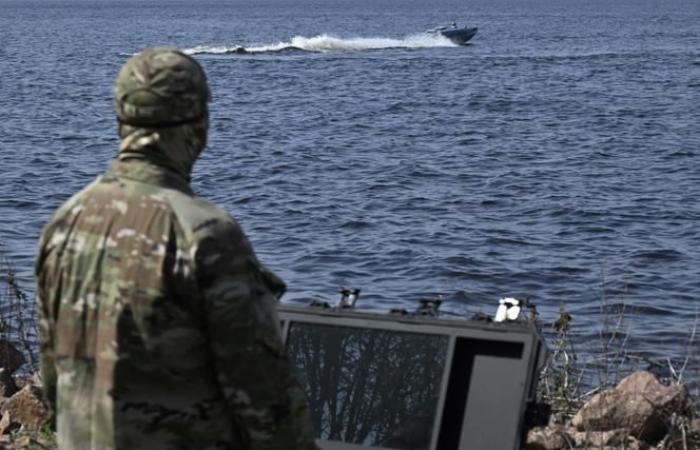That an army without a navy was able to oust the Russian fleet, one of the most powerful in the world, from the Black Sea: this is one of the great surprises of the war in Ukraine. Using boats the size of a Jet-Ski or a speedboat, the Ukrainians managed to sink or damage numerous Russian ships, forcing Moscow to withdraw a large part of its fleet from the port of Sevastopol. While Euronaval – one of the major naval arms shows – is being held in Paris from November 4 to 7, all navies are now wondering about the place to be given to these unmanned surface vessels, also called “USV” (for unmanned surface vehicle in English).
Surface drones are not a new reality, “but recent technological developments in on-board electronics have made it possible to make smaller, more solid and more resistant boats in the face of a very restrictive environment, the sea”underlines Léo Péria-Peigné, rare specialist in these systems in France, and researcher at the French Institute of International Relations. “Research on surface drones was progressing relatively slowly, but the war in Ukraine provided a huge boost”he adds.
Read also | Article reserved for our subscribers Ukrainian naval drone attacks force Russian fleet to leave Crimea
Read later
Since 2023, the Houthis have also used it in the Red Sea. The devices used do not appear particularly sophisticated: some are simple armed Zodiacs projected against the ships circulating in the area. They nevertheless constitute one of the main threats facing Westerners who seek to guarantee freedom of movement.
United States Ghost Fleet
Too many missions and not enough ships. This has long been the impossible equation that the American Navy, the most advanced in the so-called “USV” field, must resolve. In addition to a fleet of small surface drones comparable to those used in Ukraine, the Americans have therefore embarked on the development of real unmanned warships.
In 2016, they launched their first unmanned patrol boat. Baptized Sea-Hunter (“hunter of the seas”), this trimaran, 40 meters long, is capable of sailing independently for months. Equipped with state-of-the-art sonar, radars and cameras, it is supposed to be able to carry out different missions: anti-submarine warfare, mine warfare, maritime surveillance, etc. All at an unbeatable cost, according to the Pentagon: 20 000 dollars (a little over 18,400 euros) per day compared to 700,000 dollars for a destroyer.
You have 70.89% of this article left to read. The rest is reserved for subscribers.







